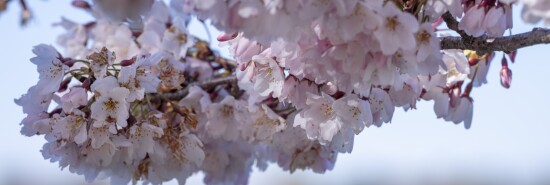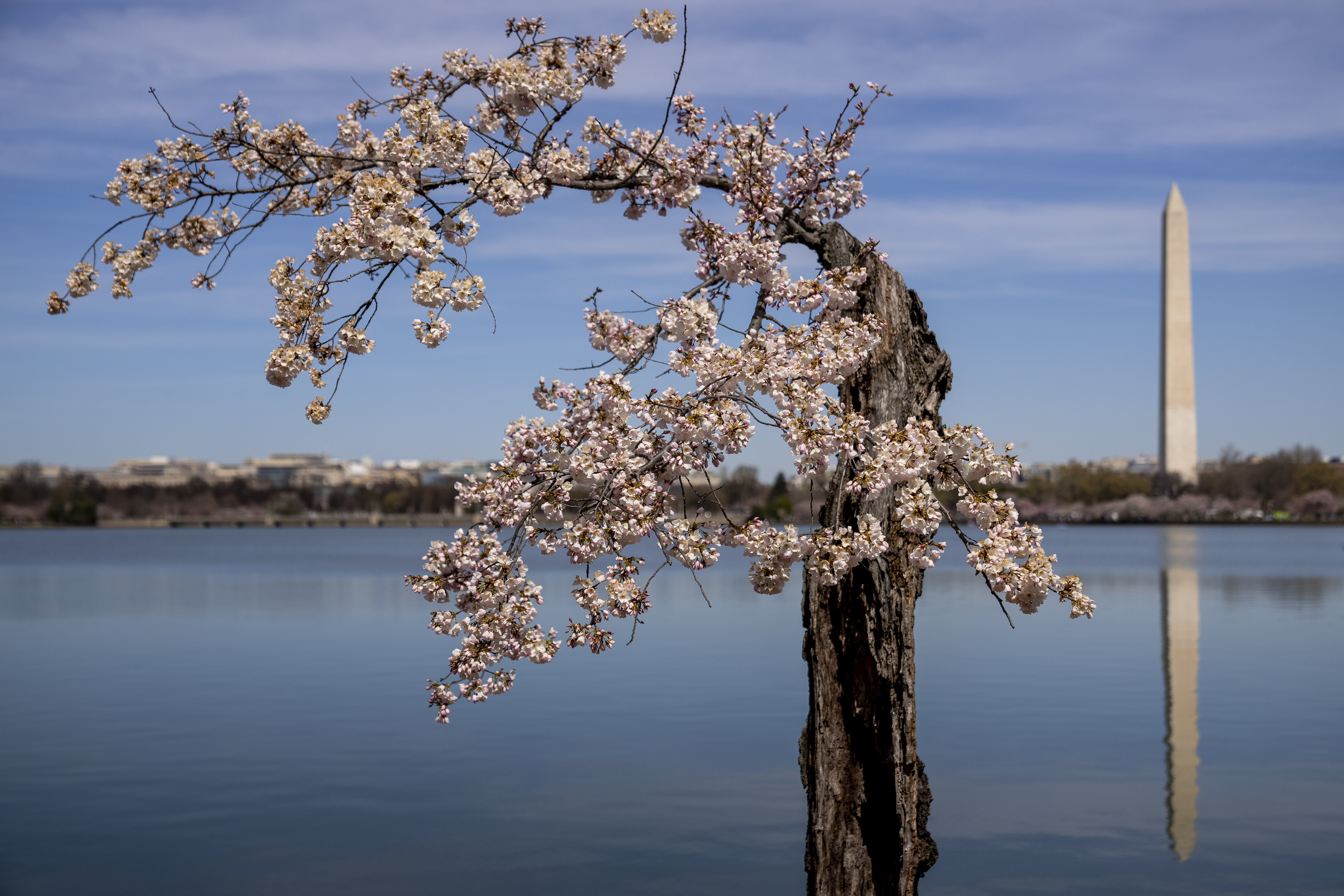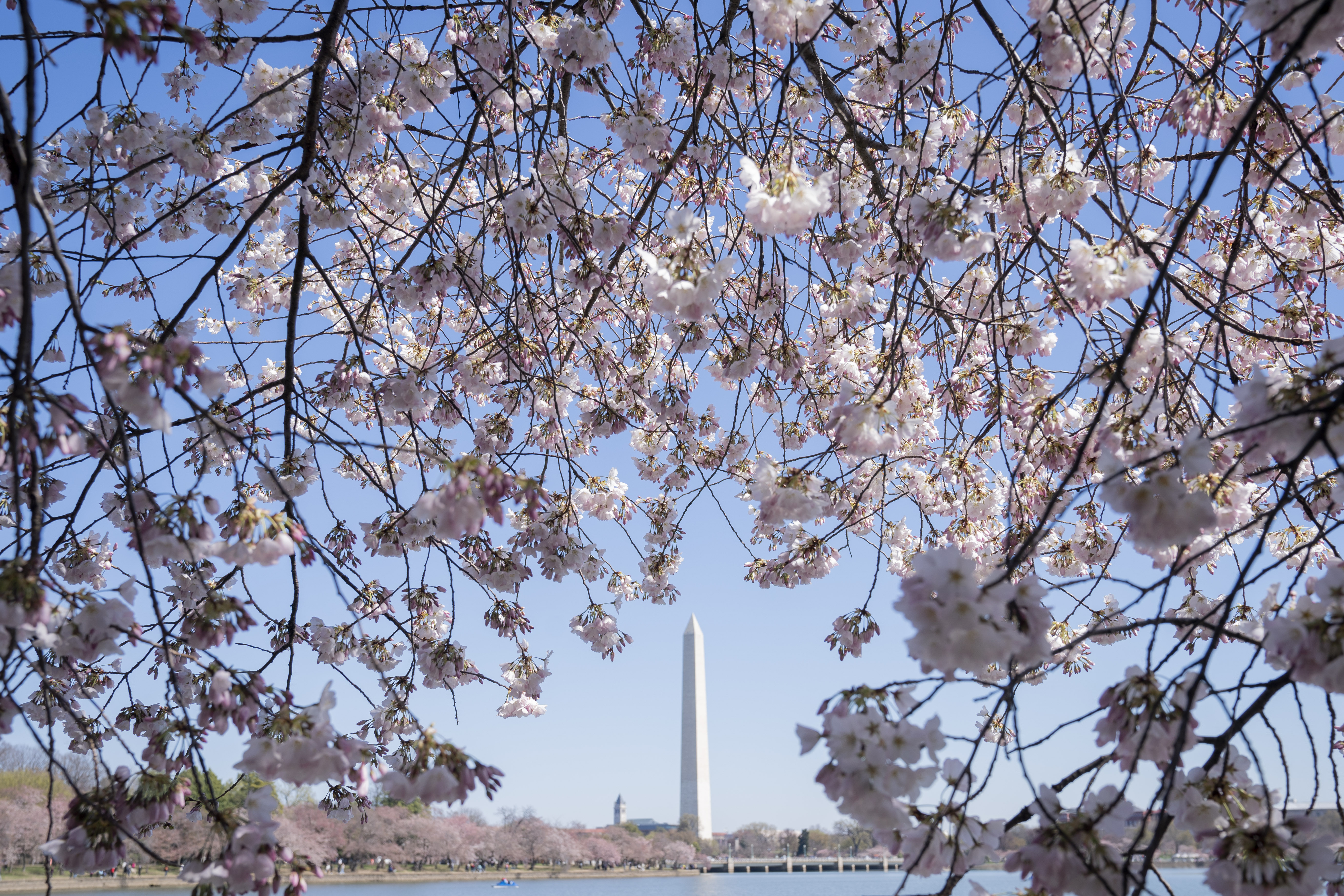
DC cherry blossoms: The cost behind maintaining these fleeting beauties
Amy DeLaura
Video Embed
WASHINGTON — There are 3,700 cherry blossom trees lining the National Mall. As 1.5 million visitors come from all over the world to Washington, D.C., to see the fleeting blossoms, we take a look at the cost behind maintaining these fragile beauties.
Julie Moore, the vice president of communications for the Trust for the National Mall, told the Washington Examiner that 90 to 100 trees need replacing every year, which can cost upward of $100,000.
DC CHERRY BLOSSOMS: TOP PLACES TO GET YOUR FIX AROUND WASHINGTON
“The 3,700 cherry trees on the Tidal Basin are a critically important project,” Moore said. “Preserving those trees is fundamental to what we do. They’ve been on the Tidal Basin for 100 years. They’re facing the challenges of old age.”

“Cherry trees have a finite life,” said Mike Litterst, the spokesman for the National Mall. “The average lifespan of a Yoshino cherry tree is about 40-50 years.”
The cost of caring for a cherry blossom for its entire lifespan is $1,000 per tree.
“That $1,000 will help support the planting of the new sapling,” Moore said. “It’ll help support the National Park Service’s work to prune the tree, water the tree, feed the tree, fertilize it, put down a blanket of mulch so it stays cool in the summer and warm and moist throughout the year.”
“I think people take for granted that these trees will bloom for the next generation,” Moore added. “The Trust for the National Mall really works to make sure they bloom for the next generation.”
The nonprofit group partners with the National Park Service to help restore, preserve, and enrich the National Mall.

The Tidal Basin in Washington floods twice a day. Moore says this is due to the failing infrastructure of the sea walls and rising sea levels.
“The National Park Service and the federal government are embarking on a project to shore up those sea walls that’s beginning this year. It’s a long-term project,” Moore said. “We also have something called the Tidal Basin Ideas Lab, which the Trust for the National Mall set up with the Trust for Historic Preservation. In 2020, we brought together five landscape architecture firms to really reimagine what this space will look like and to create a long-term sustainable solution for the Tidal Basin that would be ecologically friendly and help preserve and protect the views and the trees.”
One and a half million people have descended on the nation’s capital to see the puffy pink and white flowers. However, rain and freezing temperatures have stifled this year’s peak bloom. Moore says there is a “Bloom Cam” pointing at the Tidal Basin so people can check the crowds and see if any blooms remain. As you plan your trip to see these beloved blooms, the Trust for the National Mall asks the visitors coming every year from all over the world to help preserve the trees.
CLICK HERE TO READ MORE FROM THE WASHINGTON EXAMINER
“Do not touch the trees. Do not climb on the trees or break off any blooms or blossoms,” Moore said.
Moore encourages people to visit Bloomcam.org if they want to support the trees. You can even adopt a tree on the Tidal Basin to ensure it blooms for the next generation.
